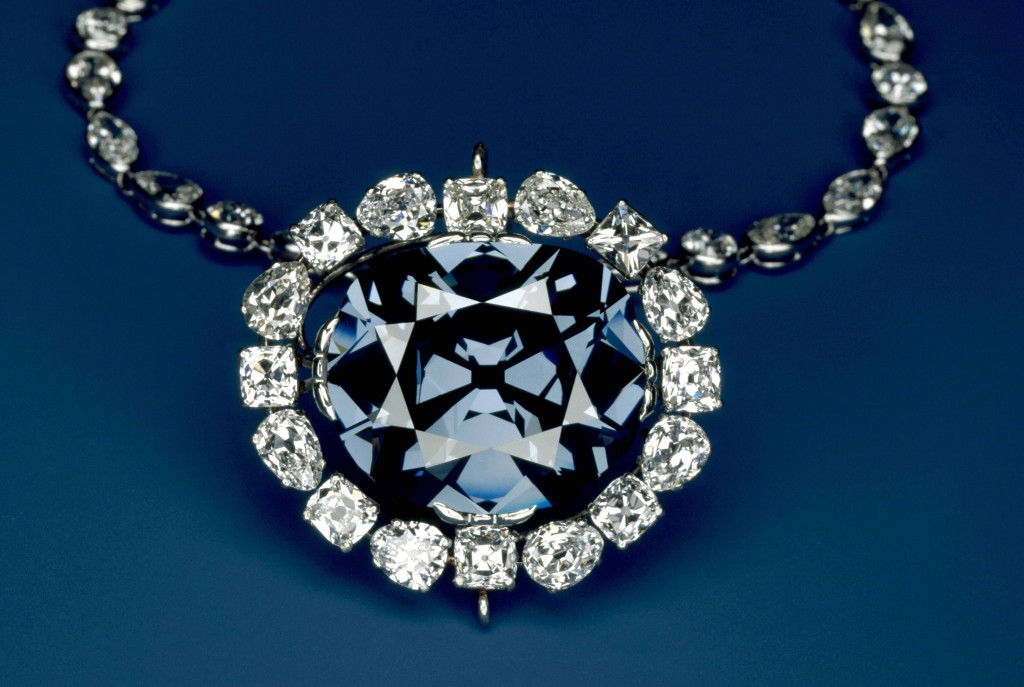If you love things that shine and sparkle, you should visit this “gem” of the Smithsonian Museums. From albite to zoisite the Smithsonian National Museum of Natural History in D.C. has one of the largest collections of gems and minerals in the world. With approximately 350,000 mineral specimens and 10,000 gems, the collection is used for scientific research, education programs, and public exhibitions. Every year hundreds of specimens are loaned to scientists around the world for research projects in geology, materials science, health, chemistry, physics, and other disciplines.
The research collections of the Department of Mineral Sciences originated with specimens donated by James Smithson, a chemist and mineralogist famous for the 1839 bequest of a half million dollars used to establish the Smithsonian Institution. While Smithson’s original collection was lost in a fire in 1865, the modern geological collections, begun in 1870, now include more than 600,000 specimens, most of which are available for study by qualified scientific investigators.
Washington Roebling, the civil engineer behind the Brooklyn Bridge, was a dedicated mineral collector. When Roebling died in 1926, his son donated his father’s 16,000 mineral specimens to the museum, along with an endowment to help the collection expand.
The Janet Annenberg Hooker Hall of Geology, Gems, and Minerals displays 2,500 minerals and gems, including the Hope Diamond, Hooker Emerald Brooch, and Star of Asia sapphire. It also explores the birth and evolution of the solar system and the earth’s changing surface and is divided into the following sections:
The Harry Winston Gallery houses the Hope Diamond, in a specially designed case.
The National Gem Collection features:
- The Dom Pedro aquamarine, the world’s largest faceted aquamarine, cut into an obelisk standing 13.75 inches tall and weighing 10,363 carats (4.6 pounds)
- The Cindy Chao Black Label Masterpiece Royal Butterfly Brooch (2009), composed of 2,328 gems, including sapphires, diamonds, rubies, and tsavorite (green) garnets, for a total weight of 77 carats; many of the gems fluoresce under ultraviolet light (added March 6, 2013)
- The Marie Antoinette diamond earrings
- A 263-carat diamond necklace and a diadem (tiara) given by Napoleon to Empress Marie-Louise
- The Janet Annenberg Hooker fancy yellow diamonds
- Two topaz crystals from Brazil, weighing 111 and 70 pounds respectively, and a 23,000-carat cut-and-polished topaz
- A 423-carat sapphire set in diamonds
- The DeYoung red and pink diamonds
- The 127-carat Portuguese diamond, the largest cut diamond in the collection
- The Rosser Reeves ruby
- The Carmen Lucia Ruby, weighing 23.1-carats, is one of the largest faceted Burmese rubies known to exist. The stone is set in platinum and flanked by 2 triangular colorless diamonds measuring 1.1 and 1.27 carats.
- The Minerals and Gems Gallery features some 2,000 specimens grouped by shape, color, growth, and other characteristics.
- The Mine Gallery features a re-creation of 4 mines showing crystal pockets and ore veins in created dioramas.
- The Plate Tectonics Gallery illustrates how earthquakes, mountain chains, and volcanoes result from the constantly shifting plates of the Earth’s surface and features the “Plate Tectonics Theater” and interactive computer stations.
- The Moon, Meteorites, and Solar System Gallery explores the birth and evolution of our solar system through films, computer interactives, and specimens and features moon rocks, a touchable Mars rock, meteorites, and stardust.
- The Rocks Gallery focuses on how rocks record and verify the geological processes that have shaped our planet—erosion and deposition, which destroy and create rocks on Earth’s surface and heat and pressure, which transform and melt rocks within the Earth.
After viewing the precious gems and minerals, you might ease your envy with a stop at the Smithsonian Gem Shop for a grow-your–own crystal set, or a piece of fine jewelry with amythest, amber or garnet.

